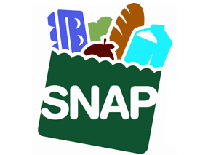Food insecurity – living in a household that does not have consistent access to enough food for a healthy, active life – and obesity are increasingly seen as related problems. Food assistance programs can reduce hunger, and in the U.S., the Supplemental Nutrition Assistance Program (SNAP, which was formerly called Food Stamps) and the Special Supplemental Nutrition Program for Women, Infants, and Children (WIC) help tens of millions of families put food on the table. SNAP benefits can be used for most anything in a supermarket (except for tobacco, alcohol, prepared foods, and vitamins), while WIC benefits can only be used for specific, nutritious foods. But questions have been raised as to whether food assistance programs are doing enough to help people obtain the most healthful foods and drinks.
Some proposed changes to food assistance programs have been highly controversial. In 2011, for example, the United States Department of Agriculture turned down New York City’s request to pilot test a ban on using food stamps for sugary drinks. There’s more support for using targeted subsidies or incentives for buying healthful foods, such as fruits and vegetables, and encouraging more local stores and farmers markets to accept food assistance program vouchers.
- A 2013 survey of individuals with stakeholder interest in SNAP – a broad spectrum of individuals including those who work on issues related to SNAP, public health, obesity, nutrition and food insecurity – showed that most believed that incentives for purchasing healthful foods might have the greatest potential for improving the diets of SNAP participants. (15)
Clearly, pilot studies are needed to explore different ways to improve the quality of foods purchased with food stamps, such as using the same nutrition criteria for food stamps as is used for the WIC program.
Here is a brief summary of recommendations for ways that food assistance programs can help prevent obesity. It’s based on a review of expert guidance from the Institute of Medicine, the Robert Wood Johnson Foundation, Trust for America’s Health, and others. For more detailed guidance on these recommendations and ideas for putting them into practice, explore the source list and the links to other resources.
Increase enrollment in WIC and SNAP, using existing government programs (such as Medicaid and the Children Health Insurance Program)(1,2)
Change SNAP and WIC guidelines to give people incentives to make healthier food choices (1,3,4,5,6,7)
Identify and test improvements that would align SNAP purchases with 2010 Dietary Guidelines for Americans(7)
Study the impact of changing SNAP guidelines to prohibit benefits from being used to buy sugar-sweetened beverages, (8) or making other changes to improve the quality of foods purchased with SNAP(7)
Remove restrictions on the use of SNAP Education funds for materials or social marketing campaigns that discourage the consumption of unhealthy foods, such as sugar-sweetened beverages (5)
Increase WIC vouchers for fruit and vegetables (6,9)
Encourage farmers’ markets and small store owners to accept SNAP and WIC electronic benefit cards(2,3,9,10,11)
Focus on children’s nutrition by testing healthy food guidelines for children who receive SNAP benefits (7)
Create stronger healthy food stocking standards for SNAP retailers similar to those required of stores that participate in WIC (7)
Require the FDA to collect data on SNAP purchases that can be used to analyze the program’s effect on nutrition and health (7)
Improve nutrition guidelines for Child and Adult Care Food Program and Summer Food Service Program(12,13)
Increase supply of healthy foods (including produce) in food banks and other emergency food programs (9,14)
Food Assistance Programs Source List
1. Blue Cross and Blue Shield Association. Federal Policy Recommendations for Combating Childhood Obesity. Chicago: Blue Cross and Blue Shield Association; 2010.
2. Institute of Medicine. Local government actions to prevent childhood obesity. Washington, D.C.: National Academy of Sciences Press; 2009.
3. Leadership for Healthy Communities. Improving Access to Healthy Foods: A Guide for Policy-Makers. Washington, D.C.: Robert Wood Johnson Foundation; 2007.
4. Levi J, Segal LM, St. Laurent R, Kohn D. F as in Fat 2011: How Obesity Threatens America’s Future. Washington, D.C.: Trust for America’s Health/Robert Wood Johnson Foundation; 2011.
5. Shenkin JD, Jacobson MF. Using the Food Stamp Program and other methods to promote healthy diets for low-income consumers. Am J Public Health. 2010; 100:1562-4.
6. Frieden TR, Dietz W, Collins J. Reducing childhood obesity through policy change: acting now to prevent obesity. Health Aff (Millwood). 2010; 29:357-63.
7. Center for the Study of the Presidency and Congress. SNAP to Health: A Fresh Approach to Improving Nutrition in the Supplemental Nutrition Assistance Program. Washington, D.C. 2012.
8. Brownell KD, Ludwig DS. The Supplemental Nutrition Assistance Program, soda, and USDA policy: who benefits? JAMA. 2011;306:1370-1.
9. American Academy of Pediatrics. Prevention and Treatment of Child Overweight and Obesity: Policy Opportunities Tool. 2010. Accessed February 7, 2012.
10. Centers for Disease Control and Prevention. The CDC Guide to Fruit & Vegetable Strategies to Increase Access, Availability, and Consumption. Atlanta: U.S. Department of Health and Human Services, Centers for Disease Control and Prevention; 2010.
11. Levi J, Vinter S, St. Laurent R, Segal LM. F as in Fat: How Obesity Policies are Failing in America. Washington, D.C.: Trust for America’s Health; 2008.
12. Cutter C, Lou D, Donze Black J, et al. Child Nutrition Programs: Federal Options and Opportunities. Little Rock: Robert Wood Johnson Foundation Center to Prevent Childhood Obesity; 2009.
13. U.S. Conference of Mayors. Mayors’ Guide to Fighting Childhood Obesity. Washington, D.C.: U.S. Conference of Mayors; 2009.
14. Levi J, Vinter S, Richardson L, St. Laurent R, Segal L. F as in Fat: How Obesity Policies are Failing in America. Washington, D.C.: Trust for America’s Health; 2009.
15. Blumenthal, S.J., Hoffnagle, E.E., Leung, C.W., Lofink, H., Jensen, H.H., Foerster, S.B., Cheung, L.W.Y., Nestle, M. & Willet, W.C. (2013). Strategies to improve the dietary quality of Supplemental Nutrition Assistance Program (SNAP) beneficiaries: An assessment of stakeholder opinions. Public Health Nutrition.
